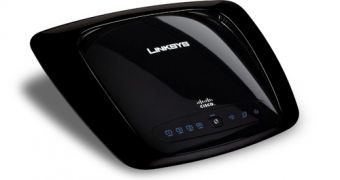Linksys' new generation of wireless routers have taken another approach at networking. If average networking gear is better off in a dark basement or well stashed in an equipment cabinet, the new wireless offerings from Linksys do their job in plain view.
The two designer models are the Ultra RangePlus Wireless-N Broadband Router (WRT160N) and Ultra RangePlus Wireless-N Gigabit Broadband Router (WRT310N) which can work both as a wireless access point and a 4 port, full-duplex network switch with a Gigabit Ethernet connector.
Unlike Belkin's glittering N1 Vision Wireless Router, the Linksys offerings have more than stylish design and elegance. The two wireless routers are packed with new features that increase both the network's security and operation.
The wireless routers come with the company's Linksys EasyLink Advisor (LELA) technology, a software application that guards the network activity and alerts the user each time new devices are being added to the network. The LELA tool can also be used for troubleshooting network problems, as well as for identifying security breaches, intrusions or threats.
As far as the connectivity part is concerned, the new routers bring the best in wireless networking, including Wireless-N (draft 802.11n) technology and multiple overlapping radio signals. The data transfer rate also got a significant boost by using the "Multiple in, Multiple out "(MIMO) technology.
Average wireless routers encounter significant issues generated by reflecting signals. Linksys' newest additions, on the contrary, use reflecting signals to to increase the range and avoid dead spots within the covered space.
The MIMO technology enables a double-speed mode for Wireless-N devices, while providing full support for older wireless devices in the a/b/g standard. When using a Wireless-N card, users get higher data transfer rates, that are suitable for latency-critical applications, such as HD streaming, online gaming and voice-over-IP calls among others.
Connection hijacking is also impossible, thanks to the built-in military-grade 256 bit encryption.

 14 DAY TRIAL //
14 DAY TRIAL //